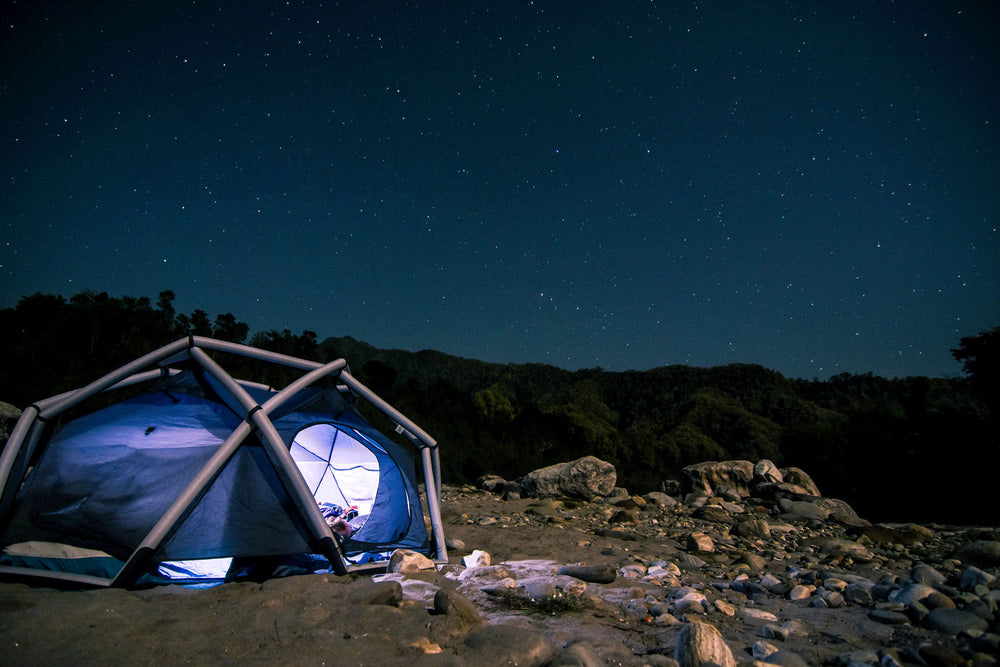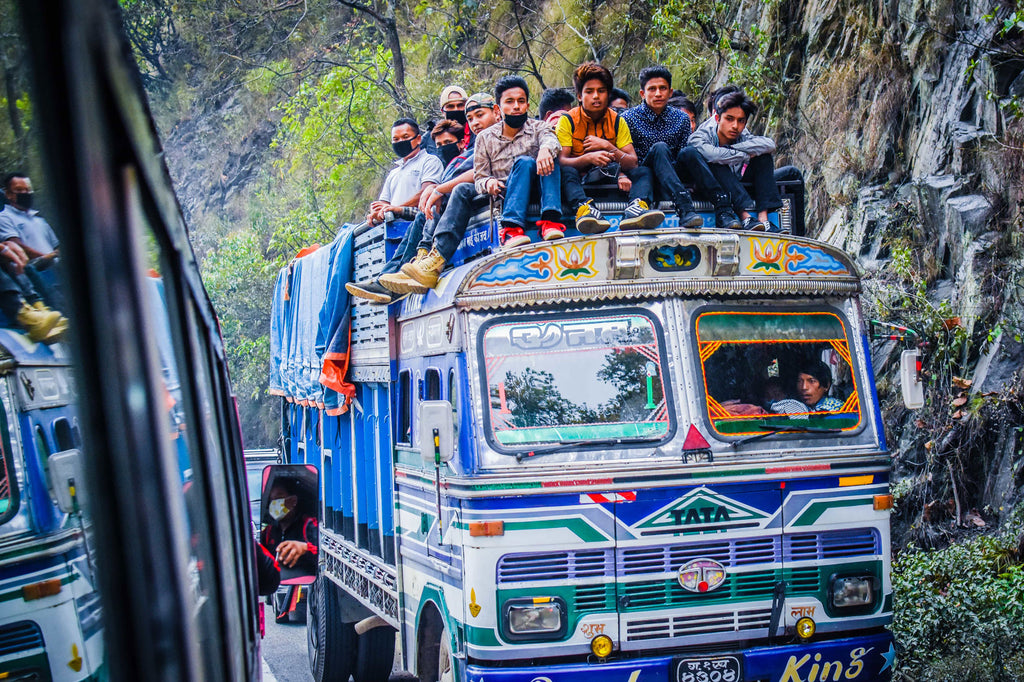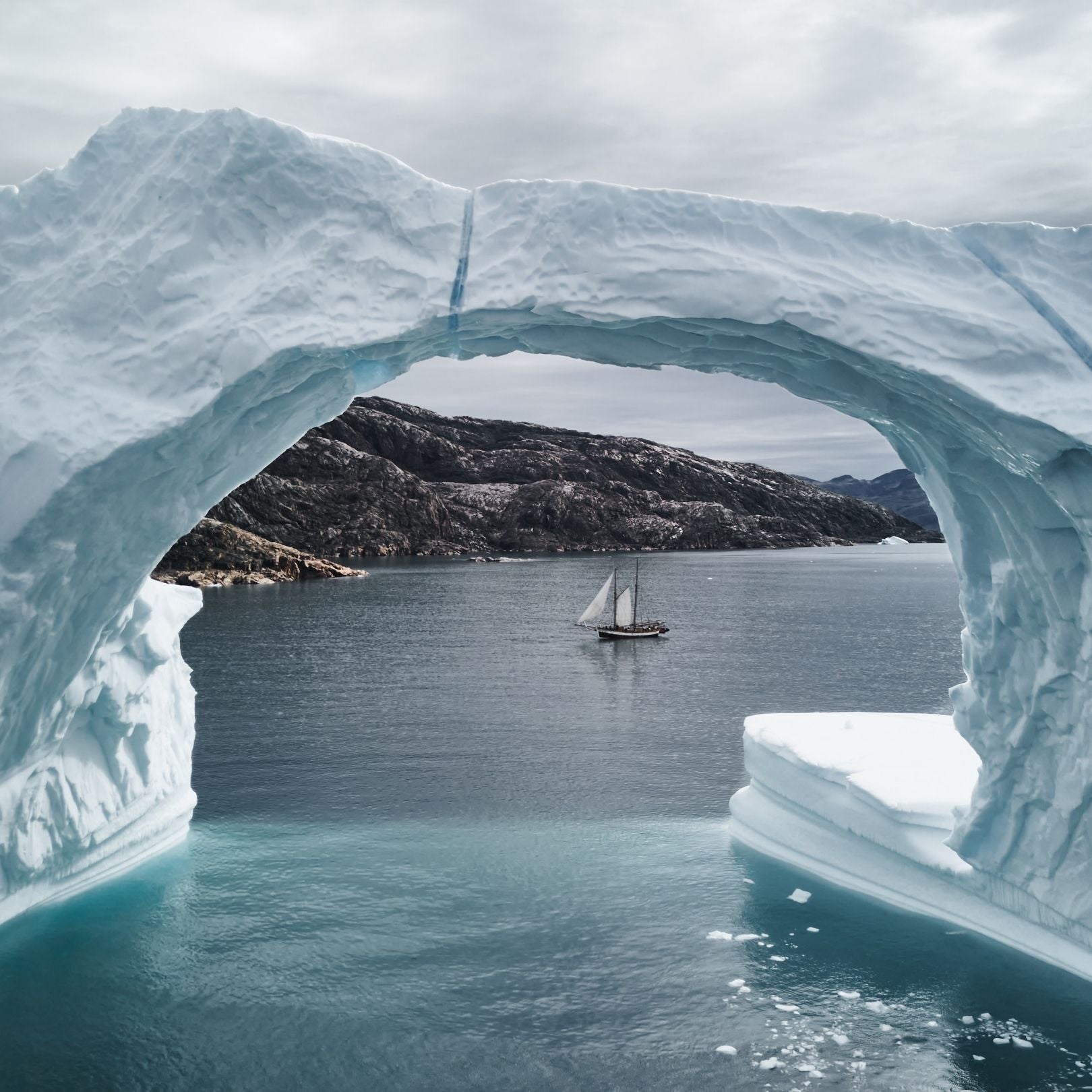SUP AROUND THE WORLD
Das Schönste am Reisen mit einem Stand Up Paddle Board ist, dass man allein durch die Tatsache, dass man sich mit einem so einfachen Transportmittel fortbewegt, plötzlich in der Lage ist, überall auf der Welt echte Kontakte zu den Einheimischen zu knüpfen.

Wenn man irgendwo auf dem Wasser und auf einem einfachen Brett ankommt, fallen sofort alle kulturellen Barrieren weg. Alle sind bereit, dich anzufeuern, ihre Kinder wollen es versuchen, die Fischer interessieren sich für dich und fragen dich nach Details über das Board, plötzlich ist es, als wärst du Teil des Lebens der Gemeinschaft. Das ist ein immer wiederkehrendes Muster, das ich auf der ganzen Welt beobachtet habe, und es ist genau das, was mich daran hindert, die Welt durch SUP zu sehen.

Dies ist eine kurze Geschichte darüber, was es für mich bedeutete, in etwas mehr als drei Wochen die Welt zu sehen und mit meinem aufblasbaren Zelt und meinem aufblasbaren SUP-Board durch einige der unglaublichsten Stand Up Paddle-Orte der Welt zu reisen. Eigentlich geht es darum, die Ecken der Welt zu besuchen, um Menschen zu treffen, die durch das Wasser verbunden sind, so wie wir Stand Up Paddler es von Natur aus sind. Insgesamt nahmen wir 19 Flüge und besuchten 5 Kontinente, bis ich voller Erinnerungen und Lebenserfahrungen nach Hause zurückkehrte.

YAP, Mikronesien
Grasröcke, Steingeld und westliche Einflüsse
Nach einer Nacht in Japan bin ich auf dem Weg nach Yap, einer winzig kleinen Insel im Nordpazifik, die zu Mikronesien gehört. Yap hat ein üppig grünes Landesinnere voller Palmen und Betelnussbäume. Die Küste ist größtenteils mit Mangroven bewachsen, und um die ganze Insel herum befindet sich ein schützendes Riff, in dem man Mantas bis zu einem Meter Breite finden kann. Eine große Oase mit nur 10.000 Einwohnern und ohne jegliche Industrie. Hier stehe ich also vor meinem Zelt am Ufer und warte darauf, dass die Flut kommt und wir die Insel mit unseren SUP-Boards erkunden können. Die meisten Inselbewohner leben wie wir direkt am Strand und fischen und sammeln aus dem Wald direkt hinter ihren Häusern. Es ist ein wirklich entspannter Lebensstil, den man sich nur schwer zu eigen machen kann.
Aber heute liegen die traditionellen hölzernen Ausleger zwischen den Palmen als Überbleibsel einer einstigen echten Wasserkultur. Früher war die einzige Möglichkeit, die Insel zu verlassen, die Fahrt mit dem Auslegerboot. Bei diesen Fahrten musste man sich auf die Sterne verlassen, um den Kurs zu halten. Um die nächste winzige Insel nicht zu verpassen, braucht man außergewöhnliche Navigationsfähigkeiten!

Auch wenn sie größtenteils verloren gegangen ist, lebt diese Tradition der Seefahrt auf der ganzen Insel weiter und ist ein historischer Bezugspunkt und ein Beispiel für Tapferkeit für uns, die wir zu Freizeitzwecken und nicht zum Überleben paddeln und navigieren. In gewisser Weise fühlen wir uns sofort mit diesen Menschen verbunden, die durch das Meer und die Natur verbunden sind. Und wir haben den Grund verstanden, warum wir hierher gekommen sind, um mit ihnen in Kontakt zu kommen. Es ist eine Reise zurück zu den Wurzeln dessen, was wir lieben, zu der Kultur, die ein ganzes maritimes Imperium auf der Grundlage ihrer Segeltechniken, Navigationsfähigkeiten und viel Paddeln aufgebaut hat!
Inzwischen sind wir schon damit beschäftigt, über unser nächstes Ziel, Nepal, zu fantasieren. Vom Meer zum Gipfel, um zu verstehen, wie die Dynamik des größten Flussgebiets der Welt das Leben der Menschen beeinflusst, die an diesen Flüssen leben.

NEPAL
Himalaya, Erdbeben und Wildwasser
Wenn ich reise, bin ich jedes Mal aufs Neue von den Kontrasten überrascht. So wie dieses Mal, als ich von Mikronesien nach Nepal reiste: Die Kontraste hätten nicht schärfer sein können. Sobald ich in Kathmandu ankomme, fühle ich mich in eine brummende Welt aus hupenden Autos und Motorrädern katapultiert, die chaotisch durch die staubigen und schmutzigen Straßen fahren. Es ist schockierend, aber ich genieße es. Und außerdem fühle ich mich hier wie zu Hause. Dies ist das Land der Entdeckungen. Das Land der Wildwasserflüsse, der höchsten Gipfel der Welt und der langen Wanderwege.

Durch die Schneeschmelze im Himalaya gibt es eine ganze Reihe von Flüssen, die man mit dem SUP-Board erkunden kann. Allerdings sind nur wenige der Flüsse ruhig genug, um mit unserer Ausrüstung hinunterzupaddeln (ich habe sogar meine Kameras und meinen Laptop dabei!). Jedenfalls finden wir nach ein wenig Recherche ein Tal, das interessant zu sein scheint und einen Fluss, der mit dem SUP befahrbar sein soll.
Das ist der Moment, in dem die Katastrophe eintritt. Plötzlich beginnt der Boden zu beben. Die Menschen fangen an zu schreien, und als wir nach oben schauen, sehen wir, wie sich die Gebäude heftig bewegen und kurz vor dem Einsturz stehen. Wir rennen auf die andere Straßenseite, weg von allem, was auf uns herabfallen könnte. Wieder ein starkes Beben, eine zweite Welle, diesmal bin ich sicher, dass das Hotel, auf das ich schaue, einstürzen wird, aber wie durch ein Wunder stürzt keines der Gebäude ein.
Plötzlich ist es wieder ruhig. Wir haben gerade eines der stärksten Erdbeben in der jüngeren Geschichte Nepals überstanden, zum Glück wurde niemand in unserer Umgebung verletzt, aber von diesem Moment an nahm unsere Reise nach Nepal eine andere Wendung. In der folgenden Nacht werden wir mit vielen Nachbeben begrüßt. Alle 20 Minuten haben wir ein kleines Beben. Zum Glück zelten wir in der Wildnis, wo es sicherer ist als in einem Gebäude. Wo wir sind, weit weg vom Rest der Welt, schlafen alle in Zelten vor ihren Häusern.
Die Angst vor einem weiteren Erdbeben lässt das Dorf näher zusammenrücken und erleichtert uns den Kontakt. Eine Familie nach der anderen lädt uns zum Tee, zum Essen und zu vielen Geschichten ein. Sie sind an uns genauso interessiert wie wir an ihnen. Sofort werden wir als diejenigen abgestempelt, die im Zelt mitten im Nirgendwo übernachten; plötzlich sind wir alle gleich.
Bei unserem Abstieg flussabwärts kommen wir an schönen Dörfern und kleinen Bauernhöfen vorbei. Der Fluss ist eine wichtige Quelle für Wasser und Leben. Er ist die Autobahn, die all diese Orte im Tal miteinander verbindet. Vom Wasser aus haben wir einen so privilegierten Blick auf eines der unberührtesten Täler Nepals.

Als wir jedoch nach Kathmandu zurückkehren, sehen wir die Verwüstung des Erdbebens auf ihrem Höhepunkt: eingestürzte Gebäude, die zu Boden gefallen sind, und viele Obdachlose, die auf den Straßen kampieren. Sicherlich ein trauriger Anblick, aber auch hier erkennen wir, dass die Schwierigkeiten die Menschen zusammenbringen und sie sich gegenseitig helfen. Selbst in dieser Situation erweisen sich die Nepalesen als ein sehr widerstandsfähiges Volk.
Wir verlassen ein Land in einer schwierigen Situation, aber die positive Einstellung der Mehrheit der Bürger ist bemerkenswert. Obwohl die Situation sie in die Knie gezwungen hat, stehen sie bereits wieder auf und bauen wieder auf, was sie gerade verloren haben. In unseren Köpfen bleibt das lebendige Bild eines wunderschönen Landes mit wunderschönen Menschen und den Nächten, in denen wir in einem Zelt Geschichten über das Leben austauschten, während wir auf das nächste Nachbeben warteten.
Das Schönste am Reisen mit einem Stand Up Paddle Board ist, dass man allein durch die Tatsache, dass man sich mit einem so einfachen Transportmittel fortbewegt, plötzlich in der Lage ist, überall auf der Welt echte Kontakte zu den Einheimischen zu knüpfen. Wenn man irgendwo auf dem Wasser und auf einem einfachen Brett ankommt, fallen sofort alle kulturellen Barrieren weg. Alle sind bereit, dich anzufeuern, ihre Kinder wollen es versuchen, die Fischer interessieren sich für dich und fragen dich nach Details über das Board, plötzlich ist es, als wärst du Teil des Lebens der Gemeinschaft. Das ist ein immer wiederkehrendes Muster, das ich auf der ganzen Welt beobachtet habe, und es ist genau das, was mich daran hindert, die Welt durch SUP zu sehen.

Dies ist eine kurze Geschichte darüber, was es für mich bedeutete, in etwas mehr als drei Wochen die Welt zu sehen und mit meinem aufblasbaren Zelt und meinem aufblasbaren SUP-Board durch einige der unglaublichsten Stand Up Paddle-Orte der Welt zu reisen. Eigentlich geht es darum, die Ecken der Welt zu besuchen, um Menschen zu treffen, die durch das Wasser verbunden sind, so wie wir Stand Up Paddler es von Natur aus sind. Insgesamt nahmen wir 19 Flüge und besuchten 5 Kontinente, bis ich voller Erinnerungen und Lebenserfahrungen nach Hause zurückkehrte.








